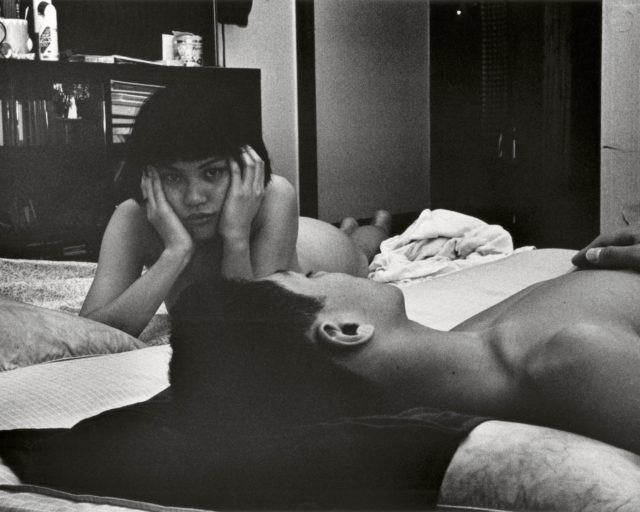Martine Stig's Sun-Drenched Amsterdam
In an unusual photobook, images move like the rhythm of free jazz.

Martine Stig, Noir, Fw:Books, Amsterdam, 2016
Despite its matter-of-fact appearance, Martine Stig’s Noir is a rather offbeat photobook. A quote from Jacques Aumont’s Montage Eisenstein (1987), about Sergei Eisenstein’s art of montage, is printed on the spine of the small, canary-yellow paperback: “The essence of cinema,” Eisenstein wrote, “does not lie in the images, but in the relation between the images.” This seems to be an instruction for how to read this book as well as a source of inspiration for its edit, carried out by Stig in collaboration with book designer Hans Gremmen.
Between 2014 and 2016, Stig shot candid, contrasty, black-and-white photos on the streets of Amsterdam. They seem to have been taken mostly during sun-drenched summer days. The highly suggestive images are filled with shadow play, and when people are shown, it is mostly in isolation, their eyes closed and lost in thought. The thoughtful, seemingly “empty” compositions are a far cry from the familiar hustle and bustle of Amsterdam. But the images, taken together, also breathe uneasily, projecting a dystopian tale of disconnectedness.

Martine Stig, Noir, Fw:Books, Amsterdam, 2016
It is perhaps not accidental that so many of Stig’s images are eerily reminiscent of Chris Marker’s influential photo-film La Jetée (1962), set in postapocalyptic Paris. But whereas La Jetée is propelled forward by compelling narration and the force of linear editing—despite its theme of time travel, in which the past and future are “call[ed] . . . to the rescue of the present”—Noir is on a completely different narrative track. When they sat down to feed Stig’s sixteen image quartets (as shown grouped in the end of the book) into the book layout, Stig and Gremmen arrived at an editing style more akin to the syncopated rhythms of free jazz. Every set of images interlocks with the others, unsupported by any orderly scheme. Most of the images take up slightly less than a quarter of a spread and reappear two or three times, each time in different juxtapositions. Because the editing scheme is so irregular, each new image that is introduced is a surprise. With every turn of the page, I also found myself leafing back a few spreads—refreshing my memory of an earlier appearance of an image or combination of images—before moving on.

Martine Stig, Noir, Fw:Books, Amsterdam, 2016
While this little photonovel references cinema on multiple levels, from its title to its focus on montage, it is also rather anticinematic. Insofar as we can even speak of narrative flow, that flow is constantly being frustrated on a productive and reflective level. The sequencing plays with the Kuleshov effect, in which one’s perception of an image is affected by the images paired with it: Each time you think you’re encountering the same photograph again, the meaning you might have attached to or projected onto it is put into question by its shifting conjunctions.
Whether an image’s essence can only be found in its relationship to another remains an open discussion. However, this exciting experiment in photo editing strengthens my belief that printed photographic intelligence and cinematic intelligence are miles apart. In a book, the in-between of images conveys a dimension that is not only mental but spatial, too.


























